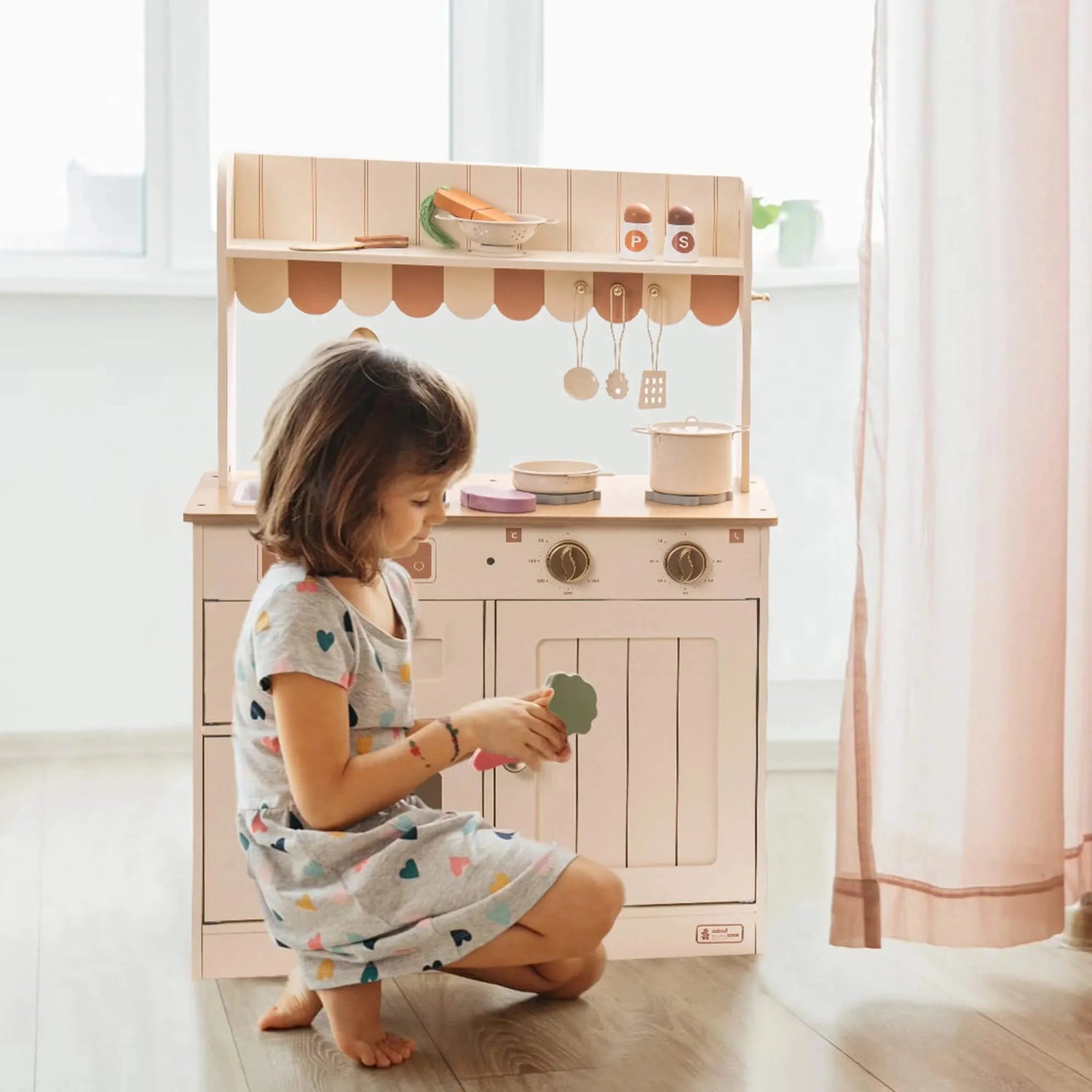The Magic of Open-Ended Play for 1–2 Year Olds
If you’ve ever watched a toddler turn a cardboard box into a car, or a spoon into a drumstick, you’ve seen the magic of open-ended play. For children aged 1–2, this type of play is not just fun — it’s a powerful way to support learning, independence, and imagination.
In this guide, we’ll explain what open-ended play is, why it matters, and how you can encourage it at home with toys like play kitchens and wooden baby walkers — as well as with simple everyday items you already have around the house.
What Is Open-Ended Play?
Open-ended play is play without rules, scripts, or a set ending. Unlike toys that have one fixed function, open-ended toys and materials allow toddlers to explore, create, and imagine in their own way.
For example:
-
A play kitchen can be a restaurant, a home kitchen, or even a shop.
-
A wooden baby walker can help with first steps, but also be filled with teddies for a “ride”.
-
A set of blocks can become a tower, a road, or a pretend birthday cake.
The beauty of open-ended play is that there are no “right” answers — just endless opportunities for creativity.
Why Is Open-Ended Play So Important for Toddlers?
Between the ages of 1 and 2, children are developing rapidly. They’re learning motor skills, testing their independence, and starting to explore imagination. Open-ended play supports this growth by:
-
🧠 Boosting creativity and problem solving — children learn to invent their own games.
-
🖐️ Developing fine and gross motor skills — stacking, pushing, stirring, and balancing.
-
🗣️ Encouraging communication — role-play sparks new words and expressions.
-
💛 Building confidence — toddlers feel proud when they use toys “their way.”
Open-Ended Play with Classic Toys
Play Kitchens: Mini Worlds of Imagination
For little ones aged 1–2, play kitchens are a perfect introduction to role play. Toddlers can pretend to cook dinner, wash up, or host a tea party for their toys. A kitchen can also become a café, shop, or even a pretend doctor’s station with a little imagination.
Grandparents love play kitchens too — they’re sturdy, timeless, and can be enjoyed by multiple children together.
Wooden Baby Walkers: More Than First Steps
A wooden baby walker is often thought of as just a tool for learning to walk. But in open-ended play, it becomes so much more. Toddlers might:
-
Fill it with teddies and push them around like a buggy.
-
Pretend it’s a shopping trolley.
-
Use it as a “delivery van” to carry blocks from one side of the room to the other.
This simple piece of equipment opens endless possibilities for movement, creativity, and role play.

Free and Easy Open-Ended Play Ideas at Home
You don’t always need fancy toys to encourage imagination. Here are a few free ways to spark open-ended play with things you already have:
-
Cardboard boxes — big ones become cars, boats, or houses; small ones are ovens or treasure chests.
-
Plastic containers and wooden spoons — instant drum kit!
-
Scarves and blankets — dens, superhero capes, or picnic rugs.
-
Safe kitchen items — pots, colanders, and wooden spoons become the tools of a little chef.
-
Cushions and pillows — soft play zones for climbing, stacking, or building forts.
With a bit of imagination, your home is already filled with opportunities for rich play.
Tips for Encouraging Open-Ended Play
-
✔️ Step back — let children lead, even if it looks “messy” or unconventional.
-
✔️ Offer a variety of toys and materials that can be used in different ways.
-
✔️ Join in sometimes, but don’t direct — instead, follow their lead.
-
✔️ Rotate toys to keep things fresh and exciting.
Final Thoughts
Open-ended play is one of the best gifts you can give to a 1–2 year old. Whether through a wooden baby walker, a play kitchen, or simply a cardboard box, the freedom to create and explore helps toddlers build skills that last a lifetime.
For parents and grandparents, encouraging open-ended play is also a reminder: children don’t need endless toys or screens to be entertained — often, all they need is time, space, and a little imagination.




Leave a comment
All comments are moderated before being published.
This site is protected by hCaptcha and the hCaptcha Privacy Policy and Terms of Service apply.